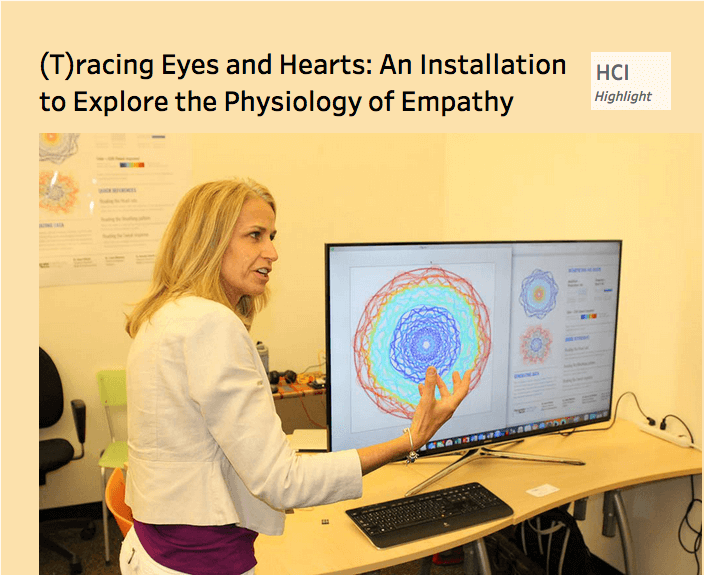(T)racing Eyes and Hearts: An Installation to Explore the Physiology of Empathy
Regan Lawson, Georgia Institute of Technology;Udaya Lakshmi Tattamangalam Ananthanarayanan, Georgia Institute of Technology; Shruti Dalvi, Georgia Institute of Technology; Nassim Jafarinaimi, Georgia Institute of Technology; Anne Pollock, Georgia Tech; Lewis Wheaton, Georgia Tech
Boston 2017: Visual and Sensory Approaches

Eye movements and heartbeats are two examples of meaningful physiological reactions in humans. How different are they when we experience the same event? Without consciously realizing it, we respond physiologically in ways that can be measured and visually represented. The visualizations produced with this installation provide a representation of such subconscious movements in our heart rate, respiratory rate and Galvanic skin, or sweat, response. The (T)racing Eyes and Hearts installation brings together humanities scholars and physiology scholars to create an art installation using representation, tracking, and visualization to investigate and reflect upon the physiology of empathy. The installation allows viewing curated content and tracks the observing user’s physiological responses. Immediately after the experience, the user will be provided this representation, in both a dynamic and static format, to allow a distinctively human-centered exploration of the data. The samples provided are prototype visualizations of people viewing the same media content – a video – showing how similar and different our responses can be. Each circular line represents the individual’s relative sweat response, pulse rate, and respiration at a distinct point in time, with time expanding outward. All physiological variables have been normalized to each individual’s range experienced during the course of the video production. How smooth or spiky each circular line appears, represents how fast the heart is beating. The amplitude of the wave represents the breathing depth at that time. The color changes represent the changes in the sweat response. Together, all three values represent changes in a person’s emotional engagement while watching the video.
Published: 01/30/2023
